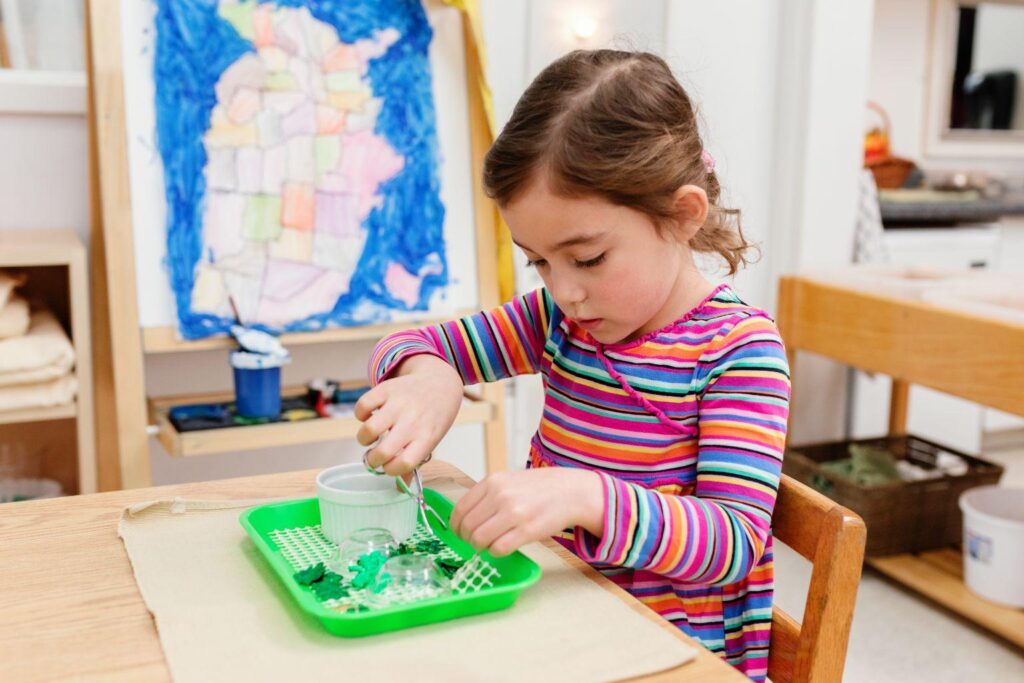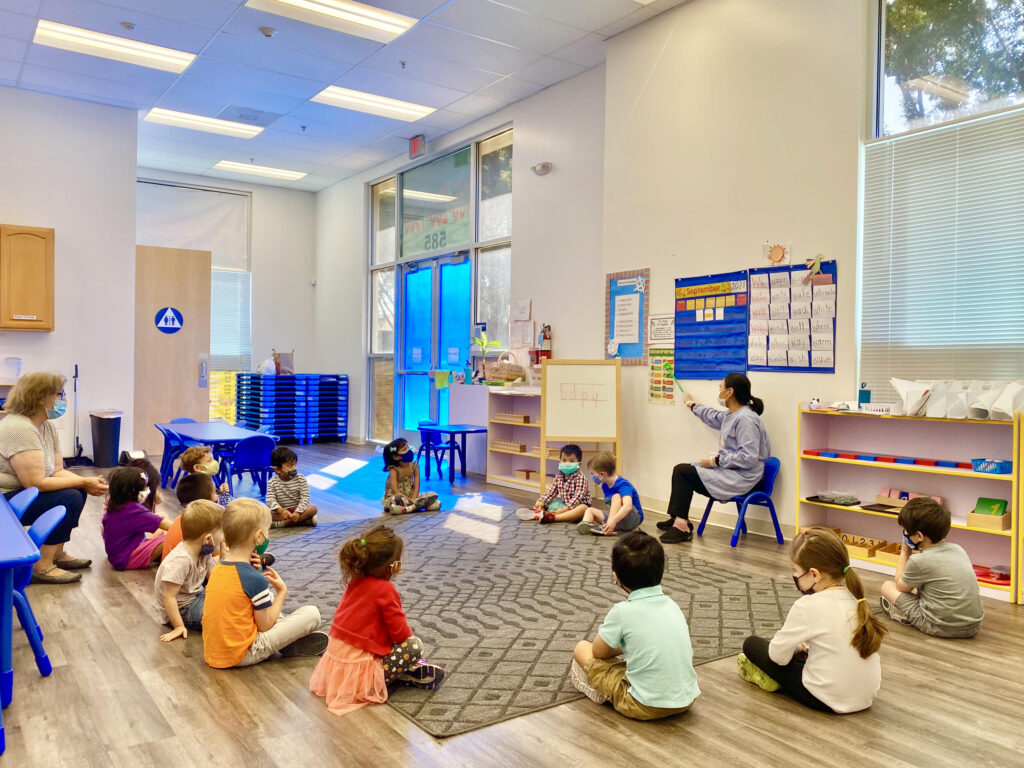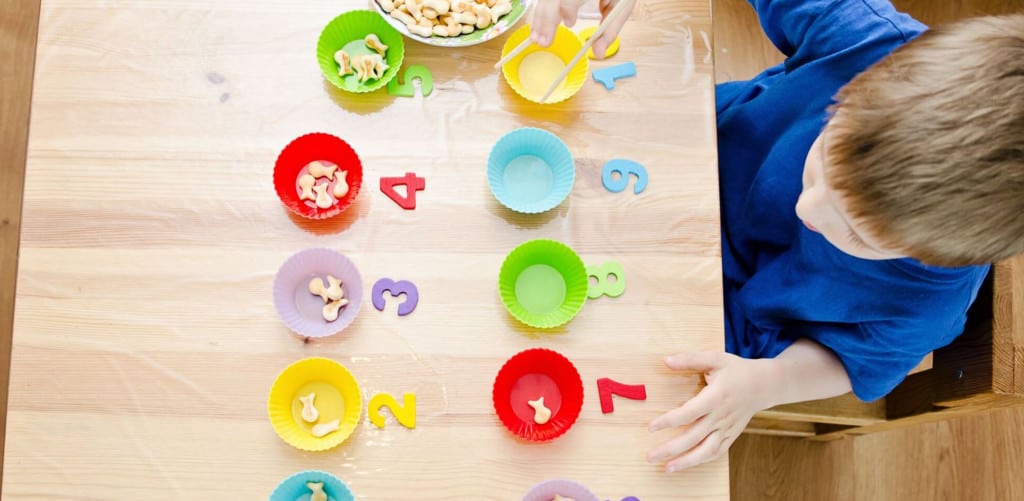Deciding on an education plan for your child can be a challenging process, and traditional classrooms are not ideal for all students. Students of all ages can benefit from Montessori style activities, which is a classic form of education that has been popular for years. Of course, any time that you make a choice for your child, you want to do thorough research.
Montessori activities can foster a sense of independence throughout all age groups. Many Montessori activities are created around natural life skills and allow children to explore their environment. However, even older students can benefit from Montessori style activities, which allow them to be in control of their education and learn through exploration instead of following a strict curriculum-based traditional learning style.
The basics of Montessori remain the same throughout the age groups involved, but the type of activities used for these schools change depending on the curriculum needed. The activities start as early as a child is born and are primarily based on learning through play, but they will become more structured with age. There are a few high schools that are completely Montessori schools, and they have elements of this style woven into the curriculum as well.
What Are Montessori Activities?
As mentioned, Montessori activities will vary depending on the age group of the child. The amount of structure in each activity and the underlying curriculum will become more rigorous as a child progresses throughout their education. No matter the age of the child, there is always an underlying foundation of respect in the classroom, and children are always encouraged to learn through their own discovery.
How Are Montessori Activities Beneficial?
Overall, Montessori can be very beneficial to all age groups, from birth to the high school years. While this style of education was traditionally for younger children, the principles of Montessori can be implemented into practically any age group. This style of learning can have countless benefits, including:
- These classrooms create a basic sense of respect and collaboration amongst everyone involved.
- Students feel in charge of their learning and are more likely to want to be involved.
- These learning methods inspire creativity and foster student interests.
- The learning can be personalized to fit student needs and personality.
- Children naturally learn self-discipline and life skills.
- Students move at their own pace and can develop naturally.

Montessori for Infants
The idea of Montessori starts as soon as a child is born and is created to meet the needs of even the smallest child. In fact, many begin implementing these principles and activities at home early on before sending their child to a traditional school system. These activities can easily be morphed into options for older children and can be altered as your child progresses through their milestones.
In the beginning, Montessori is mainly utilized to help your baby enter the world and begin understanding their surroundings. These principles are used in everything you do, how you touch your baby, talk to them, design their space, and more. Even before a baby is born, they are learning and becoming accustomed to their environment, and utilizing Montessori activities can make this process easier.
Some basics to creating a Montessori-inspired environment for newborns up to toddlers are:
- Use Natural Materials – Natural materials are often the safest and the calmest that can be used. Some options are wooden rattles, soft blankets, and rugs, etc.
- Less is Always More – Since Montessori is very child-led, you never want to overcrowd your space with options. You want to stick to the less is more mentality early on to not overwhelm your child.
- Change the Environment to Fit Your Child – As your child begins to grow and develop, you will want to add or take away options. If a toy is too difficult and becomes frustrating, remove it until they reach these abilities. If things become too simple, switch them out for more challenging toys.
Montessori Activities for Infants
There are some differences between Montessori for infants versus older children, as these children are often not highly interested in toys or artwork. However, for infants, the main concern is creating an environment that children can grow safely and effectively. This means you will want to supply the child with interesting things to look at, safe areas to lay or sit, and basic toys that they can utilize.
A commonly used activity or option for newborns to a few months old are Montessori style mobiles. These can be hung above the infant, offering them something interesting to look at and can help with brain development. Three types of mobiles that are commonly seen in Montessori nurseries or infant classrooms are:
- Octahedron Mobile – These are made using reflective primary colors, encouraging vision development, and early color recognition.
- Gobbi Mobiles – This is like the previously mentioned mobile and helps encourage the recognition of different shades of colors. These are ideal for babies that are between two and three months.
- Munari Mobile – This is great for newborn babies as the mobile is designed using only black and white items. When children are first born, they have minimal color recognition, making a black and white mobile ideal.
Most Montessori activities start at around three months of age when a baby is beginning to stay awake for more extended periods. They can also begin grabbing toys and are more likely to interact with activities. Some basic toys and things you can do with your infant are:
- Start offering simple wooden rattles and grasping toys. Children will begin to develop their grasping abilities and motor skills, so offering these toys is a great idea.
- Allow baby time to explore. Use soft, natural rugs to allow your child to do basics like tummy time and practice sitting. They should be able to safely explore their area to learn new things.
- Offering a variety of safe household toys can encourage exploration while also helping to develop life skills. Offer children basic wooden spoons and utensils. Also, begin allowing children to feed themselves when age-appropriate.
- Offer maracas and other sound-making items for baby to shake; they will enjoy hearing the various sounds and begin understanding how their actions affect the environment.
- Creating activity centers with hanging items, like patchwork balls or other basic toys, are also great. Even children who cannot sit well can lay under these mobiles or activity centers to bat at overhanging toys.

Montessori for Toddlers
Once a child phases out of the infant period, you will begin to see a change in the Montessori activities offered. While play is still the primary source of education, the activities can become more structured due to the simple fact that the child is more likely to participate in specific activities. During this time, toddlers use their bodies, senses, and problem-solving skills to learn about the world.
In fact, a basic idea behind Montessori is that the first few years of life are some of the most critical when it comes to developing personality and intellect. Toddlers are highly curious and ready to seek out information if provided with the opportunity to do so. Offering safe and respectful freedom during these years is an excellent option for most Montessori classrooms and homes.
Montessori Activities for Toddlers
Truly anything that your child is interested in can become a Montessori activity, the key here is to offer a simple variety of options that encourage growth and development. You do not want to overwhelm your child with options, while also keeping them in control of their education and surroundings. Some easy to put together and beneficial activities for the toddler years are:
- Open and Close – This activity is extremely simple but can keep toddlers entertained for some time, helping to develop coordination and motor skills. You can essentially use any boxes, drawers, tins, zip containers, etc. that can open and close easily when used by a toddler. You will then hide various toys or treasures inside the container and encourage your child to open and close them.
- Mystery Bag or Mystery Box – This is an excellent idea for developing language and encouraging exploration. Simply take a bag or box that is not easily seen through and fill it with everyday items that your child is familiar with. Allow your child to reach inside and guess what items they are feeling.
- Create a Nature Tray – A nature tray is a great way to discuss a child’s surroundings, develop language, and create new experiences. You can either collect items around your home or even purchase some new nature items like feathers and sand to create a tray of natural items. Leaves, rocks, dirt, flowers, practically anything can be added to this tray; just remember to wash your child’s hands after play.
- Sorting Items by Color – During the toddler years, you can begin teaching things like colors, letters, and basic shapes. A great way to do this is by creating sorting activities that your child can play with, using a variety of items from around your home, toys, dyed pasta, art supplies, buttons, and practically anything you may have. Offer different bowls or containers that match these colors, allowing the child to place the colored items into the containers.
- Practice Washing – Toddler years are also a great time to begin developing self-help skills and encourage development in this area. Allowing your child to help with washing hands, vegetables for dinner, dishes, toys, etc. can help create self-help skills while encouraging play. You can either let your child sit at a sink or even create a bucket of soapy water for them to explore.

Montessori for Preschool
There is not a drastic difference between Montessori for toddlers and preschool-aged students, besides the curriculum being slightly more advanced. Preschool Montessori programs begin around age three and range until a child is six. Most Montessori schools are not strict with ages; instead, they raise a child to more challenging activities and classrooms depending on ability and interests.
In fact, a Montessori classroom always encourages non-competitive learning and works to create a cooperative environment. Younger students often learn from older students. Those that may be developing more quickly encourage the growth of younger or lesser developed children.
Montessori preschools will vary depending on where you live and, of course, if you decide to do this style of learning at home. However, most of these classrooms have the activities available to students on low shelves so that they can choose what they would like to do and when. Most do have some form of a basic structure, offering certain times for various activities like music, artwork, lunch, outdoor play, etc.
This is often when rules become introduced, and a certain set of expectations should be put into place. Children at this age can still easily learn through play, but they must also become responsible for cleaning up their play areas, and underlying respect is still key. This is a great time to develop respect, sharing, and common courtesy amongst students, educators, and parents.
Montessori Activities for Preschoolers
Once again, when children enter the preschool years, it becomes a time for adding more curriculum into the learning experience while still encouraging play. This is when learning basic facts like colors, letters, sight words, etc. becomes more important. Most preschools will begin offering different activities to meet learning areas, offering science, social studies, reading and language development, art, music, etc. times throughout the day.
Some basic activities that you can incorporate into a Montessori preschool that are fun but also encourage learning are:
- Magnetic Versus Nonmagnetic – This is a great way to encourage learning about magnets, and you can include as much information as you would like to supplement the activity. During this, children can use various magnetic and nonmagnetic items and a magnetic wand to decide which items will stick. Some easy to find items to include are refrigerator magnets, pencils, rocks, paper clips, wooden blocks, keys, metal spoons, coins, and more.
- Color Sorting and Color Finding – Take the previously mentioned color sorting activity for toddlers and amp it up by encouraging children to find their own colored items, introduce color names, use color words, etc. to make this slightly more challenging. Offer a variety of items to sort from felt to paper, toys, and more, even offering a scavenger hunt.
- Sink or Float – This is another excellent option that encourages science knowledge, by using various items and discovering which sink and which float. You can offer a vast range of items like feathers, rocks, shells, wooden spoons, leaves, and practically anything you have in your home. Then provide your child with a bucket or container of water, even allowing them to use a bathtub full of water to see which items sink and which items float.
- Sorting by Size – Sorting and categorizing are often used in Montessori, which makes sorting practically any items from small to large can be a great option. This can even be used with foods and help develop language development and encourage trying new foods.
- Develop Life Skills – This is a great time to include children in basic chores like simple cleaning, picking up toys, dressing themselves, and basic cooking. You can include your child with sorting clothing, allowing them to match socks. Encouraging inclusion and self-help is amazing during the preschool years.

Montessori for Kindergarten
It is a little harder to find a primarily Montessori Kindergarten, as this is when the curriculum becomes critical to the child. However, a lot of Kindergarten programs and elementary schools use Montessori principles in a traditional classroom. This is a great way to combine academics and social experiences in a way that is fun and beneficial to the child.
During these years, there is not a necessary curriculum, and then Montessori time; it is a combination of the two that works well for each age group. Children are often still highly encouraged based on their interests, and it is essential to remember that this age group is still very young. There may be a few more rules implemented, but children are still very in charge of their learning.
Basic respect is still key; children work together and never against one another. Once again, older children still encourage younger children, and cooperative learning is frequently used.
Montessori Activities for Kindergarten
Most Kindergarten classrooms offer a variety of activities that fit the educational needs of a variety of students. These activities are divided into various areas that Kindergarten aged children need to develop. Some common activities for this age range are:
Practical Life Activities – These help encourage basic life skills and practical life activities. This is a great way to teach children to work together well while also fostering independence from adults. Some common activities that teach practical life skills are:
- Using the restroom
- Washing hands
- Brushing hair
- Using tools safely, hammers, screwdrivers, etc.
- Folding clothing, matching socks, pairing gloves, hanging clothing
- Using glue, scissors, staplers, and other craft items
- Basic cleaning
- Preparing and serving foods
- Buttoning, zipping, tying laces
Math Activities – Encouraging basic math skills becomes even more critical during the Kindergarten years. Montessori math starts with concrete examples and then become abstract over time. You will want to offer manipulatives and materials that can help encourage math growth. Some activities are:
- Number Rods
- Number Memory Games
- Decimal Trays
- Ten Boards, 100 Boards
- Math beads
Language Activities – Language is usually quite developed by this age range, but now is a time for alphabet and alphabet sound recognition to become critical. It is also when basic reading skills are introduced, and sight words are common in Kindergarten classrooms. During this time, reading time is important and is often led by the educator. Some other activities are:
- Letter Sorting
- Letter Matching Games
- Alphabet and Sound Songs
- Story Time, Reader’s Theater, Echo Reading
- Word Walls
- Writing Time During Art
- Montessori Pink, Blue, and Green Series
Science Activities – Science is an area where Montessori excels as learning through doing is common when it comes to science lessons. No matter the curriculum you are trying to teach, you can almost always make it hands-on and encourage student participation. Some common science activities are:
- Living Versus Non-living Sorting
- Herbivore, Carnivore, Omnivore Matching
- Life Cycles (You can even purchase caterpillars or tadpoles for the classroom)
- Parts of a Plant Outdoor Activity
- Plant and Animal Scavenger Hunts

Montessori for Elementary Students
Once again, you will find less and less elementary schools that are entirely Montessori based. However, you will find that these schools use basic Montessori principles in the traditional elementary classroom. Activities may include small tables, group work, mats on the floor, or other Montessori ideas to help enhance the curriculum.
Introducing Montessori concepts into a traditional elementary classroom can help students feel more at home and can help encourage student interests. Many children learn through hands-on activities and materials, allowing them to be a part of their education. Of course, rules and independence become more and more important each year as the child develops.
No matter the age of the student, offering the chance for exploration and discovery is a great way to help students grow. The classroom should stay student-focused while introducing more difficult concepts that are needed for this age range. Offering familiar routines and keeping children a vital part of the classroom community is also essential during this time.
At this time, students can be grouped in a variety of ways, whether this is by traditional classroom grades like first through sixth or by age ranges. Schools that are truly Montessori usually have multi-age groupings, where children can learn from each other. Older children in these multi-age classrooms are often viewed as role models in the community, and the classroom should be very inclusive, respectful, and non-competitive.
Montessori Activities for Elementary Students
Similarly to the Kindergarten activities mentioned, there should be a slight amount more structure with the elementary level activities. They are often divided into the curriculum areas that are needed for students of this age, like practical life skills, science, music, art, and more. Some common activities are:
- Math Activities – The use of manipulatives to help children understand abstract concepts is a great way to bridge the Montessori style into the elementary classroom. Now is a time for children to learn mathematical operations, number concepts, complex functions, and more.
- Language – Allowing children to oversee the types of reading materials they use, offering spelling and grammar games, comparing and contrasting literature, thinking critically, offering journaling time, and student presentations are all ways that Montessori can be incorporated.
- Cultural and Historical Studies – During these years is also a good time for technology to be introduced, allowing students to research common historical topics or new cultures. Students can begin respectfully discussing important topics and learning more about economics, peace and justice, world issues, and more. This is also an excellent time to begin discussing citizenship and what it takes to be a good citizen.
- Science – Once again, science is one of the best areas for incorporating Montessori principles as students can use experiments to learn scientific concepts. Students can do basic experiments to discuss living things, scientific reactions, and other concepts.
- Life Skills – By now, most children know how to do basic self-care rituals like washing hands, using the restroom, cleaning, etc. However, now is an excellent time to begin letting children take charge of their environment, offering them organization jobs, cleaning jobs, food preparation duties, and more around the classroom. Also, later elementary years are when new hygiene and personal changes may take place, which makes discussing these self-care areas important.

Montessori for High School Students
Montessori high schools are not common in many areas, and the benefits of these are not super well-known as few high schools are truly Montessori. However, many high schools around the country and even the world are incorporating these principles into their programs. The basic principles of student respect and community can work wonderfully in almost any classroom setting.
A common way that some high schools are incorporating Montessori styles is through uninterrupted work periods, as this allows students to be in charge of their learning. These can be used to teach core curriculum like math, history, science, etc. but the students oversee their own learning. During this time, there can be independent work or collaborative teamwork focused around a specific topic.
Since these Montessori principles are very hands-on and student-led, they can truly foster their own interests and feel in control of their future. This can be great for those who want to take a traditional college route after high school and those who want to do various other work. In fact, some students may create their own businesses, work as an apprentice, start charity work, enhance their performing arts, participate in field studies, and so much more.
Montessori Activities for High School Students
At this time in the child’s life, the learning curriculum is critical, especially if the student hopes to further their education beyond high school. However, learning practical life skills is also quite important and is often overlooked in a very traditional high school setting. This is why many schools are doing a combination of both traditional curriculum work and Montessori self-learning principles. Some common Montessori-based activities for high school students are:
- Reading and Writing – Allow students to have a say in what they read and write, while teaching the necessary areas needed for this age range. For example, teach letter writing but allow the student to write to someone. Allow students to read books they are interested in, doing research papers, classroom presentations, etc. on these books or authors.
- Mathematics – Do not forget that manipulatives and hands-on math learning can continue into high school years. Also, allow students to do practical math projects like crowdfunding an idea they love, creating a business plan, designing practical budgets, and more.
- Science – Science can include a variety of hands-on learning experiences, like allowing students to do experiments that can even be quite advanced for this age group. Allow students to create circuits when learning about electricity, dissect frogs, or various other animals when learning about the body, and more.
- History – Students must learn about key historical information and facts like the Industrial Revolution, economics, presidents, wars, and more. However, you can allow students to research areas they are interested in, create PowerPoints or diagrams, and present to the class information to help teach each other. This encourages students to work collaboratively and can encourage self-discovery.

Final Thoughts
Montessori style learning is an excellent option for those starting as early as birth up to even high school-aged children. While this educational style is ideal for younger students, the methods can be incorporated into the curriculum for older students as well. Countless benefits come with this style of education as it can foster cognitive growth while also establishing a sense of self-worth.

